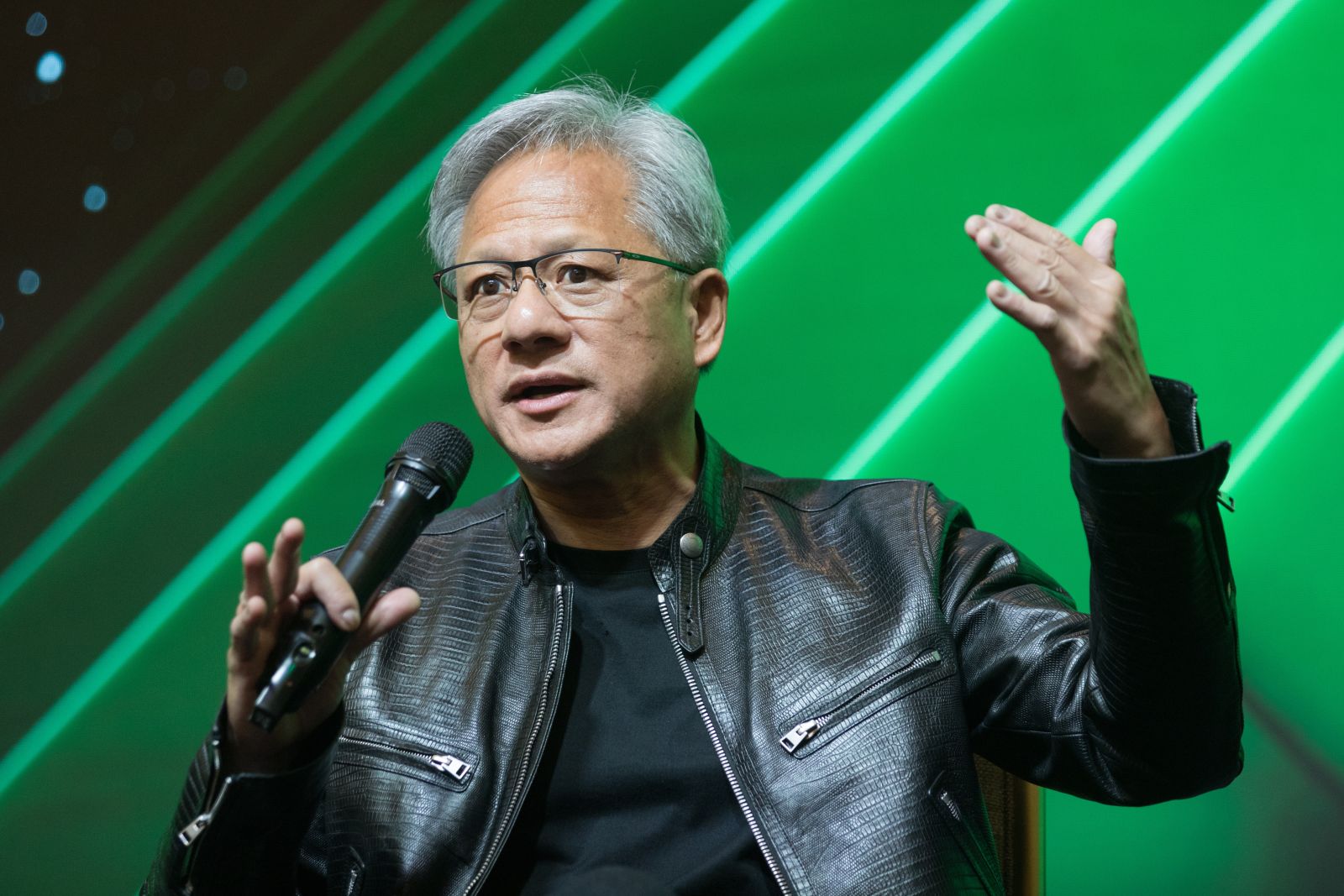
Artificial intelligence (AI) darling Nvidia’s (NVDA) CEO Jensen Huang has been championing the idea of “sovereign AI” since 2023, a vision rooted in the belief that every nation should have ownership over its own AI, shaped by its unique language, culture, and values. And now, Europe is starting to take this message seriously.
Just last week, the chip giant partnered with Deutsche Telekom (DTEGY) to introduce sovereign AI in Germany, unveiling plans to develop an AI-powered industrial cloud for European manufacturers. This so-called “AI factory,” which will be operated by Deutsche Telekom, is expected to be up and running by 2026. It’s designed to help European manufacturers integrate AI into a wide range of applications, from design and engineering to simulation, robotics, and digital twins.
In fact, this is just the beginning. Nvidia is also looking beyond Germany, with plans to expand its chip footprint into data centers across Spain, Italy, the United Kingdom, Finland, and Sweden. So, with sovereign AI finally gaining traction in Europe, is Nvidia’s growing role in this development worth investors' attention?
About Nvidia Stock
California-based Nvidia Corporation (NVDA) has rapidly risen to the forefront of the tech world, thanks to its game-changing advances in AI and GPU technology. From powering immersive gaming experiences to fueling data centers, autonomous vehicles, and high-performance computing, Nvidia’s chips are the engine behind countless modern breakthroughs, firmly establishing the company as a driving force in the digital revolution.
With a staggering $3.5 trillion market cap, Nvidia has cemented its place among the world’s most valuable companies. But in 2025, the chip giant’s meteoric rise has started to lose a bit of steam. A mix of geopolitical headwinds, including escalating U.S.-China trade tensions and tariff battles, along with growing investor caution around the pace of AI spending and the emergence of new competitive chips, have all weighed on investors’ sentiment.
After an eye-popping 794% return over the past three years, Nvidia is up just 7.3% so far this year, a far cry from its previous pace, yet still outpacing the broader S&P 500 Index’s ($SPX) modest 1.7% gain during the same stretch.

High-growth giants like Nvidia rarely come cheap, and with its dominant position in the AI world, that premium is expected. The stock currently trades at 35.4 times forward earnings, well above sector norms. However, on a positive note, that valuation is actually more reasonable than it’s been in the past. Compared to its five-year average of 47.33x, Nvidia's current multiple suggests the stock, while still expensive, isn’t as overheated as it once was.
Nvidia Delivers Strong Q1 Earnings
All eyes were on Nvidia last month, when the chip king dropped its fiscal 2026 first-quarter earnings results on May 28, and once again, it blew past expectations. Revenue skyrocketed 69% year-over-year to $44.1 billion, blowing past the $43.3 billion estimate. Once again, Nvidia’s data center segment stole the spotlight, delivering aggressive growth as the company continues to power the engine behind the AI revolution.
Nvidia’s data center business delivered a wonderful 73% annual surge to $39.1 billion, accounting for a dominant 88% of the company’s top-line figure. Meanwhile, its gaming segment, driven by demand for high-performance 3D chips, climbed 42% to $3.8 billion. Even its automotive and robotics division joined the growth party, accelerating 72% year over year to $567 million.
During the quarter, Nvidia hit a regulatory speed bump when the U.S. government ruled that its previously approved H20 chip for China would face new restrictions. The impact was costly. Nvidia took a $4.5 billion charge for excess inventory tied to the chip and estimated it lost out on $2.5 billion in potential sales. As a result, the company’s adjusted gross margin landed at 61%, but without the China-related hit, it would have been a much stronger 71.3%.
On the bottom line, Nvidia posted adjusted earnings of $0.81 per share, up 33% year over year and topping estimates by 8%. Without the drag from the H20 chip charge, that figure would’ve jumped to $0.96. Nevertheless, investors appeared satisfied with the company’s Q1 performance, with the stock soaring 3.3% on May 29. For the second quarter of fiscal 2026, Nvidia is projecting revenue of $45 billion, give or take 2%, a figure that already accounts for an estimated $8 billion hit from recent export control restrictions impacting its H20 chips.
On the profitability front, GAAP and non-GAAP gross margins are expected to land at 71.8% and 72%, respectively, with a 50-basis-point wiggle room. Despite the headwinds, Nvidia is still aiming high, targeting gross margins in the mid-70% range by the end of the year.
What Do Analysts Expect for Nvidia Stock?
Overall, Wall Street’s confidence in Nvidia remains rock-solid, with the stock still carrying a resounding “Strong Buy” consensus rating, reflecting unwavering confidence in its long-term story. Of the 44 analysts offering recommendations, 37 are giving it a solid “Strong Buy,” three suggest a “Moderate Buy,” three advocate “Hold,” and the remaining one gives a “Strong Sell.”
The average analyst price target of $174.02 indicates 23% potential upside from the current price levels. The Street-high price target of $220 suggests that NVDA could rally as much as 55% from here.

Key Takeaways
As sovereign AI gains traction across Europe, Nvidia is positioning itself at the core of the region’s AI ambitions. Through strategic partnerships like the one with Deutsche Telekom in Germany and a broader push into European data centers, the company is ensuring that even as countries strive for AI independence, they continue to heavily rely on Nvidia’s technology.
With China sales constrained by export restrictions, this European expansion opens up a timely new growth avenue. Plus, taking into account the company’s strong fundamentals and continued backing from Wall Street, Nvidia’s latest European expansion adds another powerful layer to its growth story. In a market where regional AI independence is becoming a priority, NVDA’s strategic move certainly deserves investors’ attention.
On the date of publication, Anushka Mukherji did not have (either directly or indirectly) positions in any of the securities mentioned in this article. All information and data in this article is solely for informational purposes. For more information please view the Barchart Disclosure Policy here.






